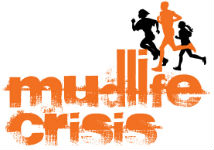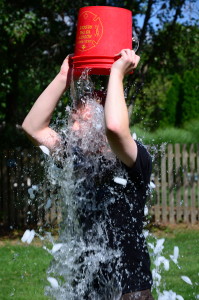One of the biggest challenges in working out, no matter what the workout type, is recovery.
As I said in my post-World’s Toughest Mudder hangover post, I did a pretty good Obstacle Course Race-specific workout a couple of weekends ago. I have since hurt my Achilles tendon a bit, as I mentioned in another previous post. So my workouts have shifted from endurance heavy running workouts to strength building for the upper body. I plan to add some swimming this week as well, so there will be more to add to the topic at hand soon. But the changing from one workout focus to another is tough from the soreness factor – working your body in a new way almost assures you’re going to feel sore and tight.
So the topic is soreness, and getting over it! One thing that you hear about “getting older” is that it gets harder to recover from workouts and performance, and there is truth to that one. Mark Sisson talked about it a while back, and I’ve got a few items of my own to add and expand upon.
Keep On Movin’
It’s not just a song by Soul II Soul, it’s gospel when it comes to proper workout recovery. As I have mentioned in past posts (including the first one above about World’s Toughest Mudder), keeping movement going is a massive bonus to the system.
One of the most painful things I ever experienced was after the Mud Ninja race a couple of years ago, when we got into the car to come home. The ride was uncomfortable, and even though the ride was only a little over an hour, getting out of the car my legs and then my ab muscles cramped up. I literally couldn’t get into a position that didn’t cramp – I’d stretch out one way and then cramp up the other way. Talk about pain – the worst part is that my wife started to laugh at me, I started to laugh, and that made it worse.
Not giving your muscles the chance to tighten up by constantly moving is the best way to avoid post-workout/performance soreness. Go for a hike. Do some yoga or Animal Flow or something like that. Hang from something. Don’t let your body let up.
Get on the floor
If you have to sit, do it on the floor. Here’s the thinking here: sitting on the floor forces you to keep moving, believe it or not. Sitting on the floor isn’t nearly as comfortable as doing it on a chair or sofa, so you keep moving around in an effort to keep yourself from tightening up. Stretch out, put your knees up, straddle, sit “criss-cross applesauce,” or try some of the poses to the left here. And if you lay down, stay on the floor. Try not to use a thick pillow, and lay on a carpet or rug. Your body will stay flat and blood won’t pool in your body and stop circulation from happening – and good circulation will remove cause your body to keep the recovery process moving.
Listen to your body
No one knows better than you what your body needs. You’ve been living there your whole life, after all. If you have aches and pains that feel different than simple muscle soreness, then rest them. Key things to notice include tightness that is specific to one spot, a sharp pain instead of a dull soreness, weakness in a joint or muscle.
Go to the extremes – in temperature
Some people will sit in a hot tub for a while to rest and relax those muscles, but it turns out that a better technique is what is popular in the country of Finland – a sauna combined with a dip in a cold lake. When I do this at the YMCA, I substitute a cold shower, but the effect is the same. You’ll force those muscles to improve their circulation with the cold, and then relax them again with the heat. This is called Contrast Therapy and I’ve found this to work really well. Alternate a five minute sauna with a minute in the shower and do three “sets” of this.
(The other side of this one, if you’re an Obstacle Course Racer, is that you’ll get yourself used to extremes in temperature and make you more resilient).
Swim
Going for a swim accomplishes the temperature issue as well as the movement issue. Make sure you’re stretching out a lot, trying both freestyle and backstroke to change the movement that you’re doing and get stretched out in different ways, take it slower and easy, and try to keep going as long as you can. The coldness of the water will keep your muscles cooled off.
Keep moving, and don’t get comfortable on a couch or whatever. Get under some cold water and cool off. Stay on the floor, and make your body move!
So how do you avoid or reduce soreness? Share below, and share this post on your favorite social media please!








